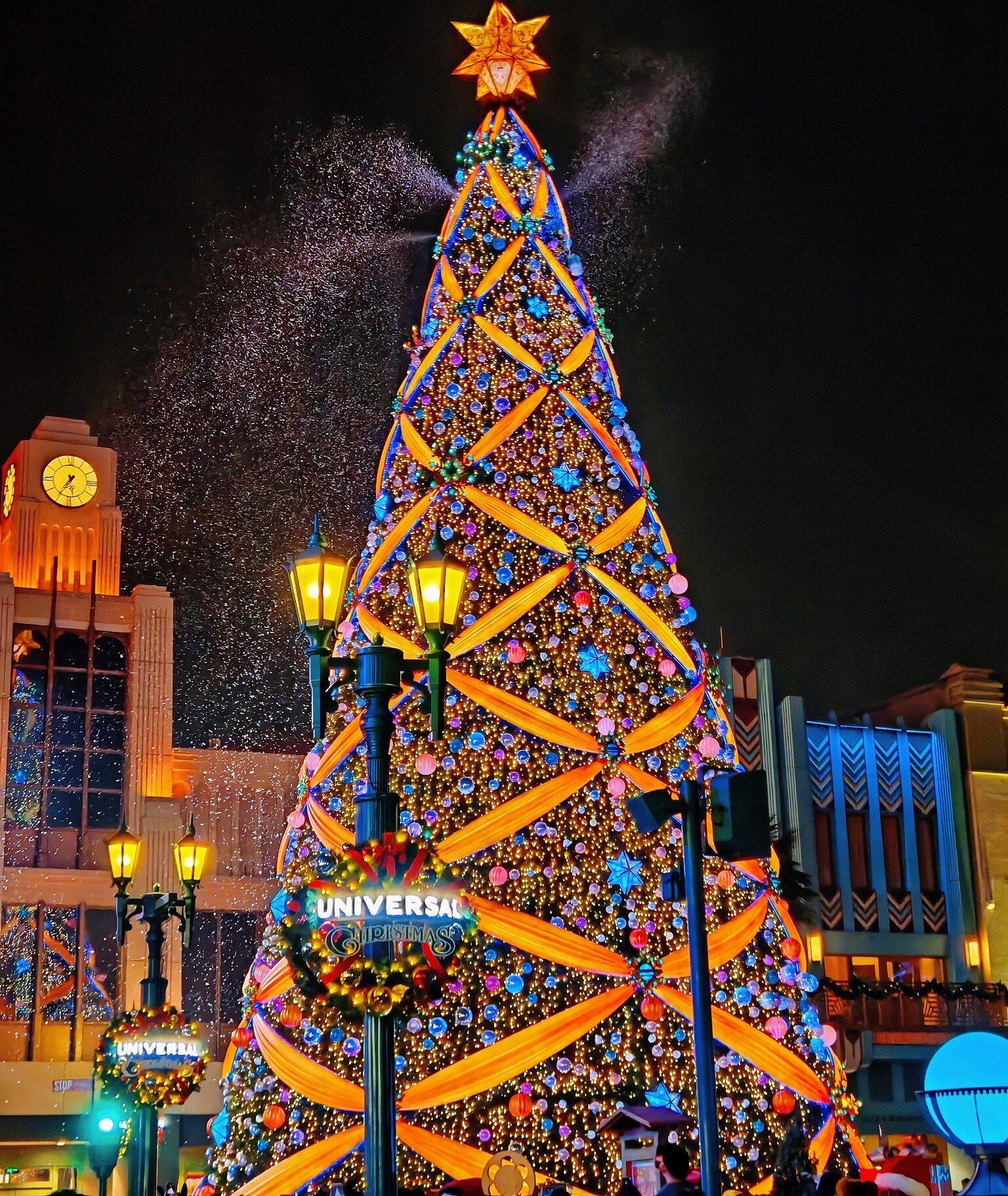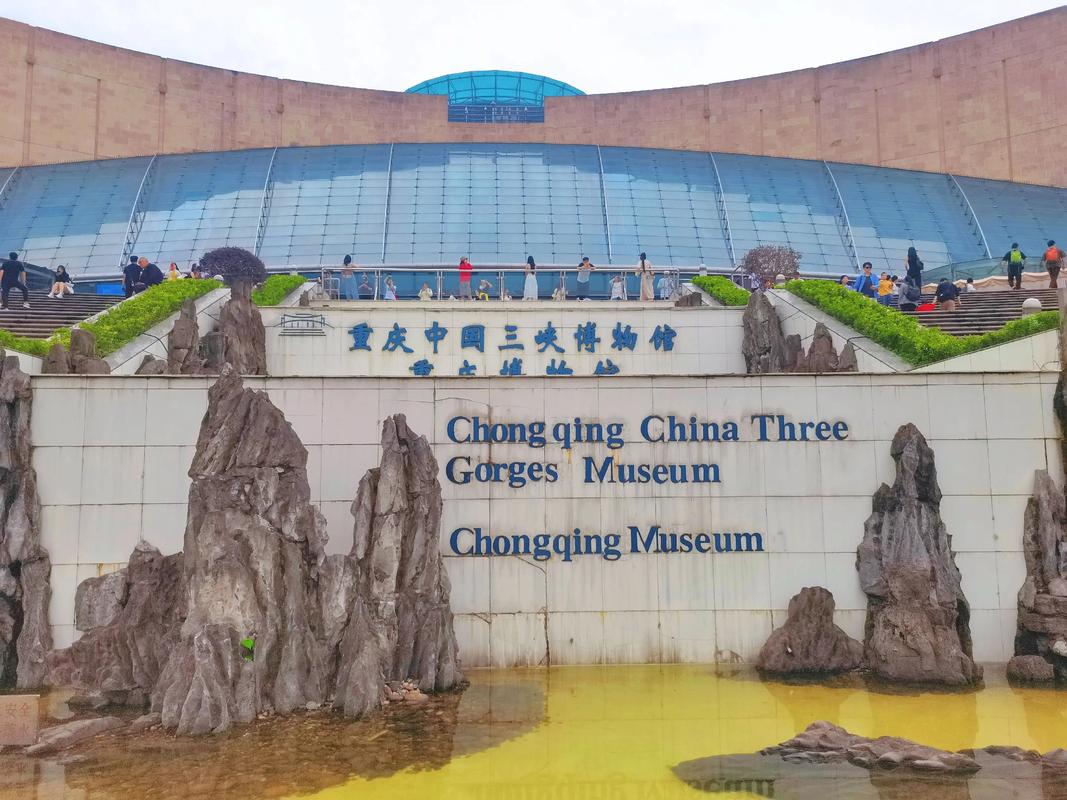Sanya location puts you right at China’s tropical front door. Sitting on Hainan Island’s southern tip, Sanya offers year-round sunshine, blue seas, and warm beaches. It’s no wonder many call it “China’s Hawaii.” But Sanya brings more than just postcard views. Its location gives travelers a perfect blend of luxury resorts, local food, island adventures, and unique cultural spots. Whether you want to snorkel in Wuzhizhou, stroll Yalong Bay, or visit Nanshan Temple, it’s all easily within reach. This guide shows you where to go, what to do, and how to make the most of your time based on Sanya’s location.
Where Exactly Is Sanya Located on the Map?
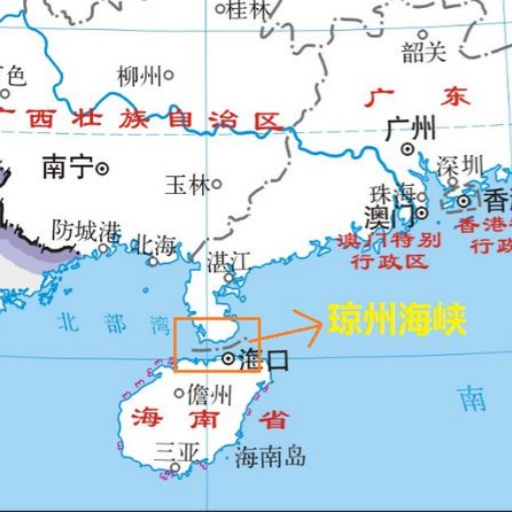
Where Exactly Is Sanya Located on the Map?
Sanya's Geographic Position
Sanya sits at the southernmost tip of Hainan Island. This prime sanya location places it right on the South China Sea, surrounded by water on almost all sides. Its geography creates a true tropical vibe, very different from most mainland Chinese cities. Many travelers even call it "China’s Hawaii" for a reason.
The city's positioning gives it a warm, tropical monsoon climate all year round. Winters stay mild, rarely dropping below 20°C, while summers are hot but not unbearable due to sea breezes. Its coastal setting also means clean air, which many domestic travelers crave when escaping smoggy mainland cities. Beaches wrap around its coastline, offering plenty of space for swimming, sunbathing, and water sports.
Sanya location also allows quick access to nearby islands like Wuzhizhou and West Island, adding more to its appeal. Its surrounding waters create excellent conditions for diving and snorkeling. For many Chinese travelers, this is the go-to spot during winter holidays when northern cities freeze. The combination of tropical views, warm waters, and natural landscapes makes Sanya one of the most attractive getaway spots in China.
How Far Is Sanya from Mainland China?
Sanya may feel remote, but it’s surprisingly accessible from mainland China. Direct flights from major cities like Guangzhou, Shenzhen, Beijing, and Shanghai make it easy to reach. The flight from Guangzhou or Shenzhen takes about 1.5 to 2 hours. From Beijing or Shanghai, expect around 3 to 3.5 hours. This quick travel time allows visitors to go from cold northern cities straight to tropical beaches in one morning.
Located at the core of the Hainan Free Trade Port, Sanya location plays an important role in China’s economic expansion. Policies here make it easier for foreign travelers to visit, and new visa-free entry programs apply to citizens of many countries. Airlines continue adding more domestic and international routes as Sanya gains more global attention.
Because of its island setting, driving from mainland China isn’t possible. However, high-speed ferries connect Hainan Island to Guangdong, though they’re less popular than flying. The fast and frequent flights keep Sanya well-linked to every major urban center, making it easy to include in both short holidays and extended China tours.
How Can You Get to Sanya from Other Cities?
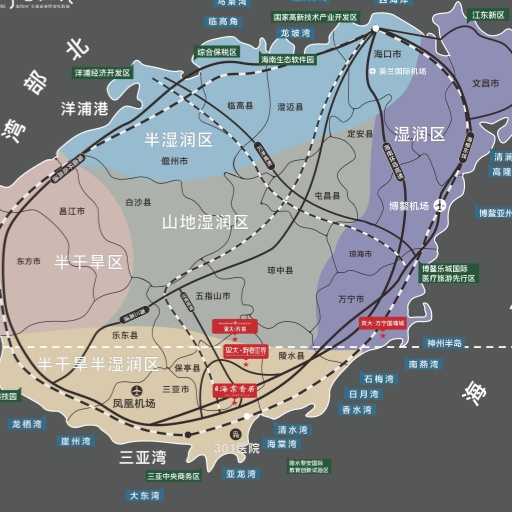
Hainan Map
By Air: Sanya Phoenix International Airport
Flying remains the fastest way to reach Sanya. Thanks to its sanya location, Phoenix International Airport serves as the main gateway for both domestic and international travelers. You’ll find direct flights from Beijing, Shanghai, Guangzhou, Shenzhen, Chengdu, and dozens of other major Chinese cities. For international travelers, routes from Hong Kong, Singapore, Seoul, and Moscow are available during peak seasons.
The airport sits about 15 kilometers from downtown Sanya. A taxi ride costs around ¥50–¥80 depending on traffic and time of day. The drive usually takes 30 minutes. Airport shuttle buses and ride-hailing apps like Didi also operate regularly, offering affordable alternatives. Some hotels provide free airport pickup if booked in advance.
Foreign visitors will find Sanya Phoenix Airport fairly user-friendly. English signage is clear, staff at major counters often speak basic English, and free Wi-Fi is available throughout the terminal. The airport has been expanding its international terminal to accommodate growing tourist numbers, especially as visa-free entry policies attract more foreign travelers. For most visitors, landing here means you’ll feel the island vibe right after stepping off the plane.
By High-Speed Train: Convenient Island Rail System
Though flying is most common, the island’s high-speed rail system offers another convenient option. Hainan Island’s circular railway connects Sanya to Haikou, Qionghai, Bo’ao, Wanning, and other cities around the island. The sanya location along this loop makes it easy for visitors to explore multiple spots without long travel times.
From Haikou East Station to Sanya Station, the ride takes about 90 minutes. Tickets cost roughly ¥90–¥150 depending on seat class and season. Trains run frequently from early morning until late evening. Stations are modern, clean, and equipped with bilingual signage, making them easy to navigate for foreign travelers.
If you're already visiting other parts of Hainan, this train system is highly efficient. Many travelers fly into Haikou to take advantage of lower fares, then ride the high-speed train south to Sanya. With scenic views of coastline, mountains, and palm-lined towns flashing by, the ride itself feels like part of your holiday. Tickets can be purchased online or at station counters with a passport.
What Are the Must-Visit Spots Near Sanya’s Location?
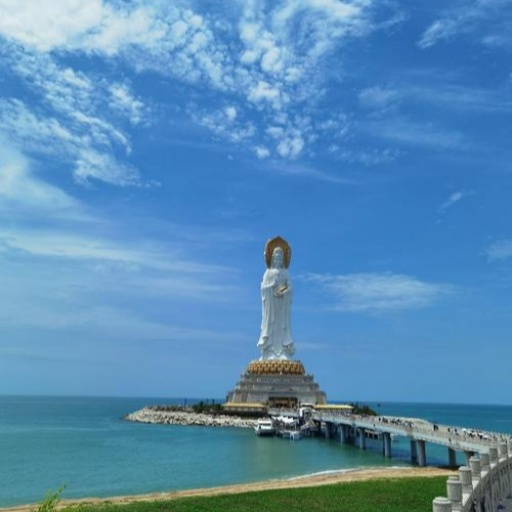
Tianya Haijiao
Yalong Bay – China’s Best Beach
Yalong Bay is often called the crown jewel of Sanya. Its sanya location offers the perfect mix of soft white sand, clear blue waters, and well-planned resorts. Stretching for 7.5 kilometers, the bay remains uncrowded even during peak seasons. Locals swear by this beach for its clean water and relaxed vibe.
Luxury resorts like Marriott, Ritz-Carlton, and The Edition line the bay. Many offer private beach access, pools, and oceanfront dining. Prices range from ¥1200 to ¥3000 per night depending on the season. These resorts accept foreign guests without issue and often provide English-speaking staff, making check-in smooth for international travelers.
Besides sunbathing, Yalong Bay is great for water activities like paddleboarding, jet skiing, and snorkeling. Vendors along the shore offer rental equipment, though resort packages often include access. Evenings here are calm, with beachfront bars offering cocktails under palm trees. The combination of luxury, beauty, and space makes Yalong Bay one of the best coastal spots in all of China.
Tianya Haijiao – The End of the Earth Landmark
Tianya Haijiao is one of Sanya’s most iconic spots. The name means “the edge of the sky and sea,” and it delivers exactly that. Located about 20 kilometers from downtown, this landmark offers sweeping ocean views, massive boulders, and a romantic atmosphere that draws both couples and families.
Entrance tickets cost around ¥81. Once inside, you’ll find well-paved walkways leading to giant stone formations engraved with Chinese calligraphy. Many visitors pose for photos beside the famous “Tianya” and “Haijiao” stones. Local legends tie the site to love stories, which makes it a popular spot for wedding shoots.
Besides the views, the park includes shaded pavilions, snack stalls, and resting areas. While weekends can get crowded, early mornings offer quieter moments. Tour buses stop here often, so solo travelers may prefer to hire a private car or join smaller group tours for a better experience. The sanya location here offers dramatic sunsets worth staying for.
Nanshan Temple – Cultural and Spiritual Escape
Nanshan Temple gives visitors a peaceful retreat away from Sanya’s beaches. Located 40 kilometers west of downtown, its sanya location combines lush tropical hills with rich Buddhist culture. The temple complex covers a vast area, with the 108-meter Guanyin statue rising majestically above the sea.
Admission costs around ¥150. Shuttle buses run from Sanya city or hotels for easy access. Once inside, you can explore numerous halls, prayer rooms, and gardens filled with incense and chanting monks. The Guanyin statue is the main draw, standing tall on a man-made island extending into the sea.
Besides spiritual exploration, visitors enjoy vegetarian meals prepared by temple chefs. The calm atmosphere, sea breeze, and mountain views create a very different side of Sanya. For those seeking more than just beaches, Nanshan Temple adds depth to any trip, blending nature, culture, and quiet reflection.
Which Day Trips Can You Take from Sanya?
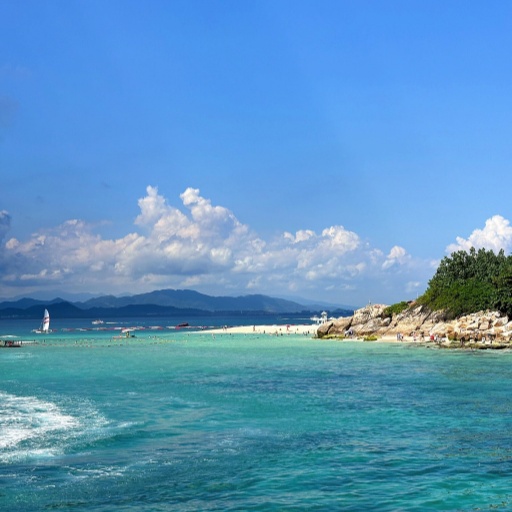
Wuzhizhou Island
Wuzhizhou Island – A Snorkeling Paradise
Wuzhizhou Island sits about 30 kilometers northeast of downtown. Thanks to its prime sanya location, it’s famous for crystal-clear waters and colorful coral reefs. If you’re into snorkeling, this is one of the best spots in China.
Ferries depart regularly from Wuzhizhou Wharf. A round-trip ticket costs around ¥150–¥200 depending on season. Entry tickets to the island itself cost about ¥144–¥168. Once on the island, you’ll find multiple beaches, water sports centers, and viewing platforms. Snorkeling, scuba diving, jet skiing, and parasailing are all available, though they cost extra.
The underwater visibility here reaches up to 20 meters on good days. Tropical fish, coral gardens, and warm waters create a picture-perfect setting. Tour guides are available, but many foreign visitors simply rent gear and explore on their own. It’s best to visit in the morning when winds are calmer. Wuzhizhou’s clean environment and rich marine life offer something unique you won’t easily find elsewhere along China’s coast.
Monkey Island – A Unique Wildlife Experience
Monkey Island, or Nanwan Monkey Island, offers a very different kind of island trip. Located about 80 kilometers east of Sanya, this sanctuary is home to more than 2,000 macaques living freely in a protected natural habitat.
The most unique part? You’ll reach the island via a cable car ride that crosses over the ocean—the longest oversea cable car in China. Tickets for the round-trip cable car plus park entry cost about ¥150–¥180. Once on the island, walking trails lead you through forested hills where you can watch monkeys roam, play, and interact naturally.
Staff supervise feeding areas to ensure both tourists and animals stay safe. Visitors should avoid bringing loose food or dangling items, as the monkeys are curious but can be bold. Educational centers on the island explain conservation efforts, adding more depth to your visit. Compared to beaches, Monkey Island offers a fun, family-friendly wildlife encounter that’s rare in coastal cities.
Binglanggu Li & Miao Cultural Heritage Park
For something cultural, Binglanggu Park introduces you to Hainan’s indigenous heritage. Located about 40 kilometers from Sanya, its sanya location makes it a convenient half-day trip. The park focuses on the traditions of the Li and Miao ethnic groups, two of Hainan’s oldest native communities.
Admission costs around ¥120–¥150. Upon entry, you’ll see traditional stilt houses, weaving demonstrations, and displays of hand-crafted silver jewelry. Li women are famous for their intricate brocade work, while Miao artisans produce detailed silver headdresses. Live performances include singing, drumming, and even traditional fire-spinning shows.
Visitors can also try hands-on activities like rice pounding, rope weaving, or sampling local snacks. English signage is available throughout, and some staff speak basic English. Binglanggu gives you a break from Sanya’s beach scene and offers a deeper look into Hainan’s cultural roots. It’s educational, entertaining, and easily accessible for tourists of all ages.
Where Should You Stay Based on Sanya’s Location?

Yalong Bay
Yalong Bay for Luxury Beach Resorts
If you're after upscale comfort, Yalong Bay is the top choice. Thanks to its ideal sanya location, this area gathers many of the world’s leading hotel brands. You’ll find Marriott, Ritz-Carlton, The Edition, Park Hyatt, and St. Regis all lining the coastline.
Prices for these resorts usually range between ¥1200 and ¥3500 per night, depending on the season. Most of them are fully equipped for foreign guests, offering multilingual staff, Western restaurants, spa services, and even private airport transfers. Booking platforms like Ctrip or Trip.com offer easy online reservations.
The private beaches here stay pristine and never overcrowded. Many resorts offer snorkeling, yoga classes, and paddleboarding directly from their beachfront. In the evenings, guests can enjoy candlelit dinners, open-air bars, and live music performances by the sea. If your trip is all about comfort and luxury, Yalong Bay delivers exactly that.
Dadonghai & Sanya Bay for Budget and Convenience
Not everyone wants to spend big. Dadonghai and Sanya Bay provide a perfect middle ground for travelers seeking good value without sacrificing the beach vibe. The sanya location of these two areas places you much closer to downtown Sanya, shopping streets, and local markets.
Hotels in Dadonghai typically cost between ¥400 and ¥1000 per night. You’ll still find beachfront views but with a more casual, lively atmosphere. Restaurants here serve both local seafood and international food. Many budget hotels also welcome foreign visitors, with basic English services available at larger chains.
Sanya Bay, stretching west of downtown, offers even more budget-friendly options, including smaller guesthouses and vacation apartments starting from ¥200 per night. Its long coastline is perfect for evening walks and sunset photos. While it’s less glamorous than Yalong Bay, many travelers appreciate the easier access to city life and night markets.
Traveler Tip: Location vs. Budget Balance
Choosing the right sanya location depends on your travel priorities. If luxury, privacy, and resort-style pampering top your list, Yalong Bay is unbeatable. However, you’ll spend more and may feel distant from local culture.
For travelers who want to mix beach time with city exploring, Dadonghai offers the best balance. You can hit the sand in the morning, shop downtown in the afternoon, and enjoy bars at night—all within a short taxi ride.
Sanya Bay is ideal for long-term stays or short-budget breaks. Its affordable prices and access to public buses make it friendly for families or solo travelers who want flexibility. No matter where you stay, Sanya’s tropical charm remains within easy reach.
What Are the Top Tips for Visiting Sanya?

What Are the Top Tips for Visiting Sanya?
Best Time to Visit Sanya
Timing your trip right can make or break your sanya location experience. The best season runs from November to April. During these months, the weather stays warm, dry, and sunny, with temperatures hovering between 22°C and 28°C. The air feels fresh, and sea conditions remain ideal for swimming and water sports.
May to October brings the rainy season and occasional typhoons. Humidity rises sharply, and afternoon showers become frequent. If you're looking for perfect beach days, it's safer to avoid this period. However, hotel prices often drop during the rainy months, offering budget travelers good deals if they don’t mind some wet days.
Major Chinese holidays, like Spring Festival and National Day, attract huge domestic crowds. Booking early is essential during these peak times. Flights and hotels often sell out months in advance, and prices skyrocket. For a quieter, more relaxed vibe, aim for weekdays outside of national holidays.
Local Food, Culture and Ethnic Charm
Sanya isn't just beaches—it’s also a foodie paradise with tropical twists. Thanks to its sanya location near the sea, fresh seafood dominates local menus. Grilled lobster, steamed grouper, and stir-fried clams are crowd favorites. Don’t miss Hainan-style coconut chicken hot pot, perfect for cooler evenings.
Street snacks like qingbuliang (a chilled coconut dessert), Hainan noodles, and sticky rice dumplings offer light, affordable bites. Many seaside markets serve up seafood cooked to order, allowing you to hand-pick your fish and shellfish.
Culturally, Sanya blends Han, Li, and Miao traditions. Visit local villages or cultural parks to watch traditional dances, admire intricate handwoven textiles, or see silver jewelry crafting. Many shops sell handicrafts that make great souvenirs. This unique cultural mix gives Sanya far more depth than just its beaches.
Transportation and Travel Safety Tips
Getting around Sanya is generally simple. Taxis, public buses, and ride-hailing apps like Didi are widely used. Short rides within the city cost about ¥10–¥30, while longer trips to outlying attractions may reach ¥100–¥200. Many hotels also offer shuttle services.
English is spoken at major hotels, airports, and some tourist sites, but not everywhere. It’s smart to have translation apps handy and to carry your hotel’s address written in Chinese. Locals are friendly and usually eager to help, but language barriers can pop up.
Safety-wise, Sanya ranks as one of China’s most tourist-friendly cities. Petty theft is rare, beaches are clean, and emergency services respond quickly. Always follow beach safety warnings, especially during typhoon season. Respect local customs and natural sites, and you’ll find Sanya incredibly welcoming and easy to enjoy.
Frequently Asked Questions (FAQs)
Q: Is Sanya location safe for solo foreign travelers?
A: Yes, Sanya is one of China’s safest coastal cities for solo visitors. The tourist zones, like Yalong Bay and Dadonghai, have strong security presence. Locals are friendly, and petty crime is very rare. As usual, keep an eye on personal belongings, especially at night markets or beaches. English may not be widely spoken, but basic translation apps will help. Police stations and tourist help desks often have English support if needed. Solo female travelers also report feeling safe, even when walking around at night. Overall, Sanya location offers a very relaxed vibe for solo trips.
Q: Can you visit both Yalong Bay and Tianya Haijiao in one day?
A: Definitely. Yalong Bay and Tianya Haijiao sit about 30–40 minutes apart by car. If you start early, you can enjoy Yalong Bay’s beaches and water sports in the morning, then head to Tianya Haijiao by afternoon. A private car or DiDi makes the trip smooth. Try to avoid peak traffic around sunset. Each location takes around 2–3 hours to visit at a relaxed pace. This combo gives you both the tropical beach vibe and the iconic “End of the Earth” landmark in one full day.
Q: Are there English-speaking doctors or clinics in Sanya?
A: Yes, but options are limited. Large international hotels usually partner with private clinics that offer English-speaking doctors for minor issues. The Sanya People’s Hospital and Hainan Provincial Hospital have some staff who speak basic English, especially in their VIP or expat clinics. For serious emergencies, international health insurance often works with these hospitals directly. It’s smart to carry written medical info and have your hotel help with translation if needed. Basic pharmacy chains like Watsons also carry common medications, but bring personal prescriptions from home.
Q: Can you swim safely at the beaches year-round?
A: Generally yes, but watch the season. Sanya’s beaches have warm water year-round thanks to its tropical climate. Peak swimming season runs from November to April. During summer (May to September), typhoons occasionally bring rough seas, strong currents, or red flag warnings. Always check local weather and beach flag signals before swimming. Lifeguards are present at major beaches like Yalong Bay and Dadonghai. Stick to designated swimming zones and avoid swimming alone at night. Overall, Sanya location offers some of China’s safest swimming conditions if you follow simple safety rules.
Q: How strict is sunscreen or reef-safe product regulation in Sanya?
A: Currently, Sanya doesn’t strictly regulate sunscreen types like some islands in Southeast Asia. Most tourists bring their usual sunscreens without issue. However, local diving shops may encourage reef-safe products to protect coral reefs, especially at Wuzhizhou Island. Eco-conscious travelers often choose mineral-based sunscreens to minimize environmental harm. While there’s no legal ban, it’s always smart to pick reef-friendly brands if you plan to snorkel or dive. Many pharmacies and tourist shops sell both regular and reef-safe options. Better safe than sorry when protecting Sanya’s marine beauty.
Q: Do hotels in Sanya location allow foreign credit card payments?
A: Most major hotels and resorts in Sanya accept Visa, MasterCard, or Amex. International chains like Marriott, Hilton, and InterContinental rarely have payment issues. However, small guesthouses or local homestays might prefer Alipay, WeChat Pay, or UnionPay. It’s always best to confirm with your hotel when booking. Having some cash in Chinese yuan also helps for taxis, markets, or smaller shops. Many tourists find mobile payment apps convenient, but foreign cards work fine at most hotels inside Sanya’s main tourist zones.
Q: Is it easy to rent snorkeling or diving gear near Wuzhizhou Island?
A: Very easy. Wuzhizhou Island is Sanya’s main snorkeling and diving hub, and equipment rentals are everywhere. Most diving centers offer full packages, including instructors, wetsuits, and gear rentals. Prices vary based on package type but expect ¥300 to ¥800 for guided dives. The quality of gear is usually decent, but some travelers prefer bringing personal masks or snorkels for comfort. Reservations can be made through your hotel, tour agencies, or platforms like Trip.com. Wuzhizhou’s clear waters make it one of the best places to dive in all of Sanya.
Q: Can you book local cultural tours for Li and Miao villages in Sanya?
A: Yes! Many tour agencies offer half-day or full-day trips to Binglanggu, the main Li and Miao Cultural Heritage Park. Tours include transportation, tickets, and guides who explain the unique minority customs. Expect to see traditional performances, handcrafted silver jewelry, and woven textiles. Some tours include hands-on workshops where you can try local crafts. Booking is simple via Trip.com, hotel concierges, or local travel agencies. English-speaking guides may cost a bit more but make the experience much richer. Visiting these villages offers a great cultural break from the beaches.
Want more China travel ideas? Check out our city guides on Beijing, Shanghai, Guangzhou, and Chengdu.

